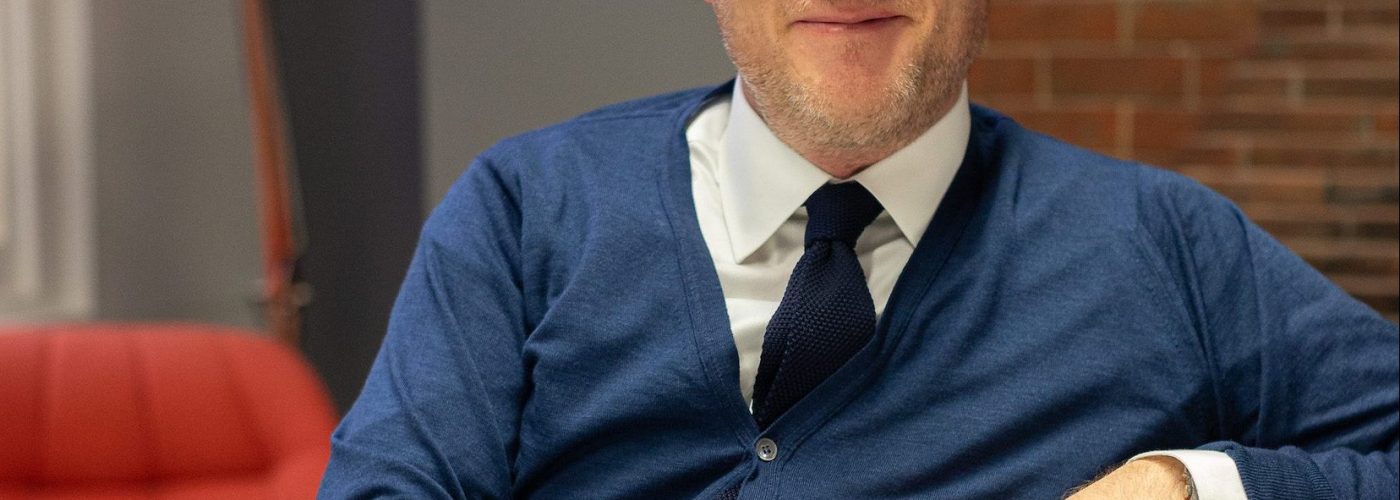DEALING with the pandemic has brought the relationship between the construction and healthcare industries into sharp focus, sparking new and innovative ways of working – and the future is looking bright. That was the key message from national framework provider Pagabo’s latest ‘Building Blocks’ podcast, hosted by executive chairman Gerard Toplass.
The construction industry was given a glimpse of how the future could look as a result of the government’s plans for major investment in healthcare over the next decade, thanks to a vastly improved, collaborative and well-integrated supply chain, which evolved during the pandemic.
The ways in which the whole industry united and problem-solved on the hoof was nothing short of impressive, adapting rapidly to ever-changing guidance to ensure as much certainty and support for clients as possible.
This was a point driven home by podcast guest Stuart McArthur, health sector lead at Sir Robert McAlpine, who was also joined by John Carson, head of capital development and planning at NTW Solutions (a subsidiary of Cumbria, Northumberland Tyne and Wear NHS Foundation Trust), and Stephen Jenkins, director at Turner and Townsend.
Throughout the conversation, the group discussed the ramifications of COVID-19, how their various projects were affected, the lessons learned, and how that all feeds into the future – particularly in relation to the benefits of frameworks.
The challenges faced
The number one priority for any and all businesses – no matter their industry – was the health and safety of staff. This was especially true within healthcare and its associated supply chains to be able to continue to deliver critical work and services.
During the initial days of the first lockdown, many construction sites ground to a halt while clarity was provided on what work should continue. But when this clarity was provided from the government, the industry reacted with real agility, flexibility and innovation to find ways to keep schemes going, while introducing the necessary safety measures.
Stephen Jenkins recalled the agility seen on construction sites, combining with a centralised and joined-up project management approach leading the way on solving the new problems thrown up each day. This attitude towards evolving practises and procedures in a safe and sensible way is something that was echoed in the pre-construction phase as well and is something that will certainly benefit the wider industry moving to the future.
John Carson, whose team was involved in creating the NHS Nightingale Hospital North East also reiterated the personal impact. There had to be a focus on wellbeing and looking after people’s mental health. People have very different tolerance levels, and the pandemic had a detrimental effect on everyone due to the combined uncertainty and personal challenges they were facing.
Certainly, one of the biggest changes we have seen in the industry is the impact COVID-19 has had on both designs and costings as clients look to ‘pandemic-proof’ hospitals and other schemes, as well as considering how more remote working of staff can impact capital costs.
Knitting together relationships and futureproofing through frameworks
The real power of frameworks comes from the long-term relationships that can be built, which are over time continually improved to form some of the strongest working collaborations in the market.
This is something particularly pertinent in the healthcare sector, where there are hugely complex clients. With the NHS and its entities there are multi-stakeholder environments that bring together clinical and technical expertise, and there are very rigorous and complex approvals processes to navigate too.
Clients and the frameworks that projects are procured through have all evolved over time. All have evolved to put more focus on social value, wanting to demonstrate the wider benefits from schemes – particularly large-scale healthcare projects – in the wider society.
They often provide the best value to clients, but it is important to remember that best value is about more than just costs. The benefit of frameworks is the overarching platform, broader objectives and a longer-term timescale they have, which allow behaviours to be built over time and focus to be put on values and outcomes.
This bigger picture of best value brings together strands – such as technology and carbon – that have previously been looked at in silos until very recently, when they are inherently connected. The key to unlock all of this is digital and data.
For example, the right digital construction techniques and toolkits will enable better and more adoption of modern methods of construction (MMC), along with the parallel assessment of carbon impact. The Construction Playbook – which was first published almost a year ago and has provided the whole industry with direction on a number of core best practice principles – focuses heavily on MMC and digital adoption.
These methods will combine with ongoing learnings from the supply chain, such as the real value in repetitive design. For example, once a treatment room or seclusion suite has been designed, the knowledge is there and can be repeated – and through MMC methods like modular construction can be built much more quickly.
Together, the construction and healthcare sectors continue to innovate and work together to tackle combined issues – and create a better future for everyone, knitted together by a data-driven approach.
You can listen to the most recent episode of Pagabo’s ‘Building Blocks’ podcast on Anchor and YouTube, and for more information please visit https://www.pagabo.co.uk/.





